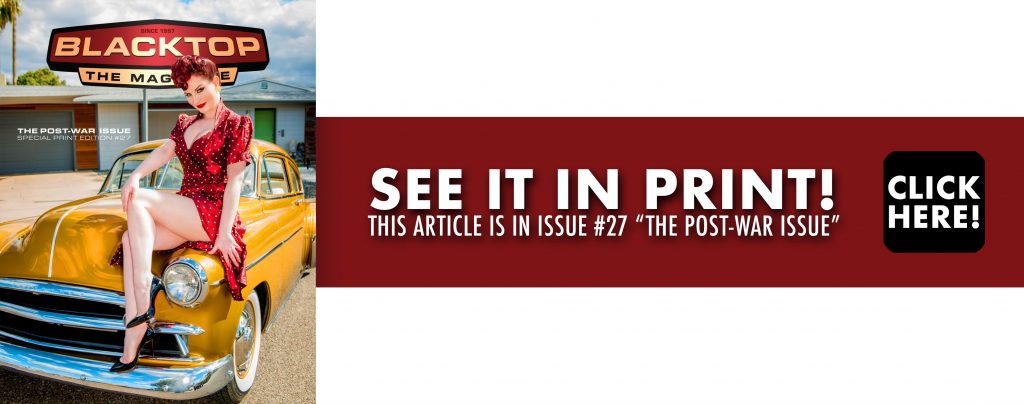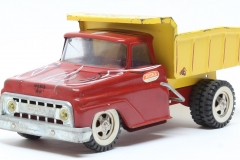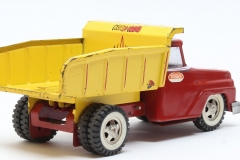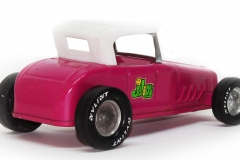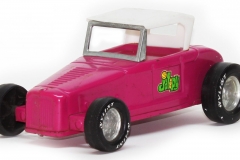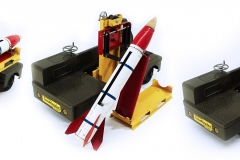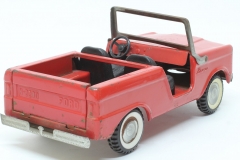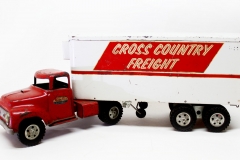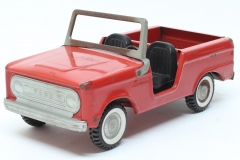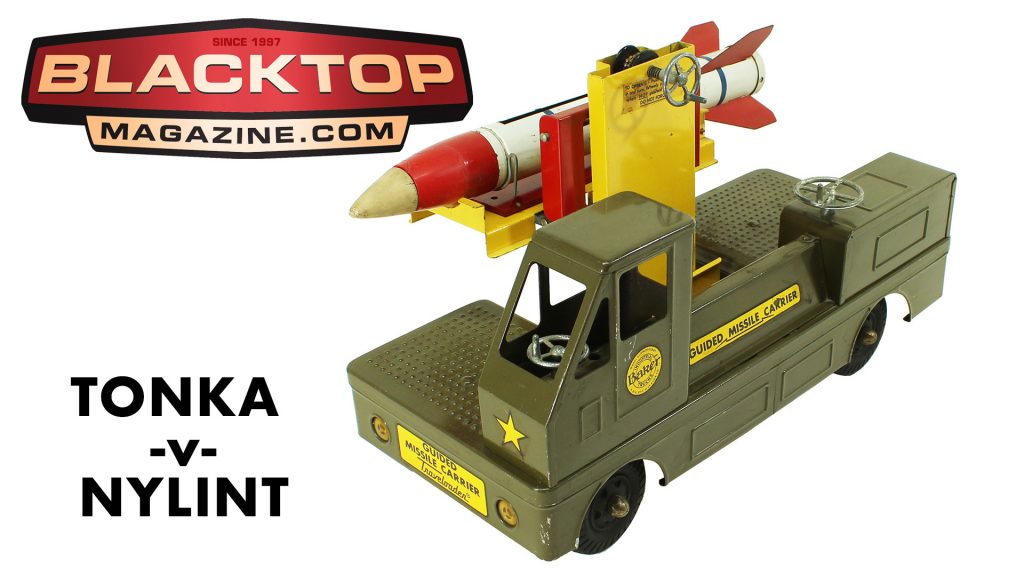
There are classic rivals in pop culture. Ford v Chevy, Coke v Pepsi, Marvel v DC. Today let’s dig into the quick history of Nylint and Tonka postwar toy manufacturers.
The story actually starts with Nylint. In 1937 on a balmy late summer evening in Rockford Illinois, brothers Bernard and Ragnar Klint (“Barnie and Rags”) met up with their Uncle Dave “Don’t call me Davey” Nybert as the founding capital partner and joined forces as Nylint Tool and Manufacturing company. Nylint is from the two last names. They produced kitchen utensils, and special-order tooling work for other companies such as refrigerator doors and cast aluminum parts for the automobile industry. In 1940 the company moved to a larger factory on 16th Ave where it remained for 60 years!
From 1941-45 the company almost exclusively produced products for the war effort, from Anti-Aircraft Magazines, to Torpedo-Related products.
After the war, the company pivoted – like many other war producers, into toy manufacturing. They made a big splash with the “Amazing Car” that their new-hire; Carl “The Man” Swenson inventor of the wind-up toy car with steering and directional actions based on the Chrysler “Airflow” at the 1946 Toy Fair in New York City. A solid product, marketed well puts Nylint on the top with toy manufacturers like Buddy-L, Structo, Smith-Miller, and Marx.
By the 1951 the affordable Nylint product line of high-quality toys took down the high-priced options from Smith-Miller and Doepke. Throughout the mid 1960’s Nylint produced highly detailed versions of truck/equipment manufacturers such as LeTourneau, JD Adams, Pettibone-Mulliken, and Clark Equipment. Demand was peaking just at the time baby-boomers were ages four through eight years old.
For several years in the early to mid-1950s, Nylint made construction pieces exclusively. In 1956, Nylint started to take advantage of the Cold War military craze. They made several missile-launching gun toys and made an uncharacteristic plastic ballistic missile set. These military toys had many operating features and sold well. Nylint also made a couple of battery-operated toys in this period including a modified version of the Elgin Street sweeper and a military Electronic Cannon truck.
By 1962, Nylint was producing Ford toy replicas for Ford dealership promotions. Nylint was building excellent renditions of the Ford F-100 line of trucks, the Ford “C” tilt-cab, and the smaller Econoline series. By the mid-1960s the company also made a replica of the Ford Bronco. Nylint was blatant about using the Ford label on its toys, stamping “Ford” on tailgates, above the grille, on hubcaps, depicting the Ford “Twin-I-Beam” badge, and a detailed hood decal. During this phase, in addition to the Ford trucks and pickups, there were several Nylint Ford jalopy hot rods made.
In June of 2001 just 6 months after filing Chapter 11 bankruptcy, all remaining assets of Nylint went to buyer Funrise Toy Corporation of California and all the molds and inventory were moved out of Rockford, Illinois. Nylint was able to remain a self-owned, independent toy company for a decade longer than its main competitor, Tonka Toys who sold to Hasbro in 1991.
Back when Nylint was transitioning to post-war production as a 9 year old company, Mound Metalcraft was created when three buddys got together in a warm tavern in a suburb just west of Minneapolis off frigid Lake Minnetonka. They were dreaming of spring when they decided to start manufacturing garden implements. Lynn “Baker” Baker, Avery Crounse, and Alvin “Big Al” Tesch took the deal they couldn’t refuse from E.C. “Easy” Streater to take over his toy business. Big Al made some design modifications and brought in Erling Eklof to design the now iconic logo based off a drafting student’s sketch and the word meaning Great or Big in Dakota Sioux “Tanka” and the waves represent the waters of Lake Minnetonka. Tonka Toys was incorporated in 1955, nine years to nearly the cold November day they formed Mound Metalcraft.
Tonkas were big. They were big because when Easy was making toys by hand it was easier to make them larger. Service trucks and equipment were the key segment for Tonka. They were known to be tough, sturdy and affordable. Like Nylint this part of the toy segment was found to be very profitable. The main distinct difference between those of the immediate post-war toys and tGhe new late ’60’s, 1970’s were the wheels. The earlier wheels had steel caps and wheels some with white wall tires. The later vehicles had plastic wheels usually yellow, white and sometimes grey. The earlier vehicles were mostly construction or farm equipment and later more “urban” vehicles, like car carriers, tow trucks, and funky vans and light duty trucks. Plastic body parts started to infiltrate the usually steel bodies. These later vehicles don’t carry the collectible status of the older ones, however just as nostalgic to late baby boomers.
Interesting that like Nylint, Ford was a premier license with light duty trucks. Jeep was another brand popular with Tonka Toys. Tonka worked with co-branding such as a series of trucks for Chevron. They featured grey and white service truck, tow-truck, tanker, big-rig and others.
In seven short years after buying Tonka Toys, Hasbro licensed Tonka to Funrise Toys to manufacture and distribute Tonka Toys. This deal means that Funrise now has the right to build and distribute both Tonka and Nylint brand toys.
